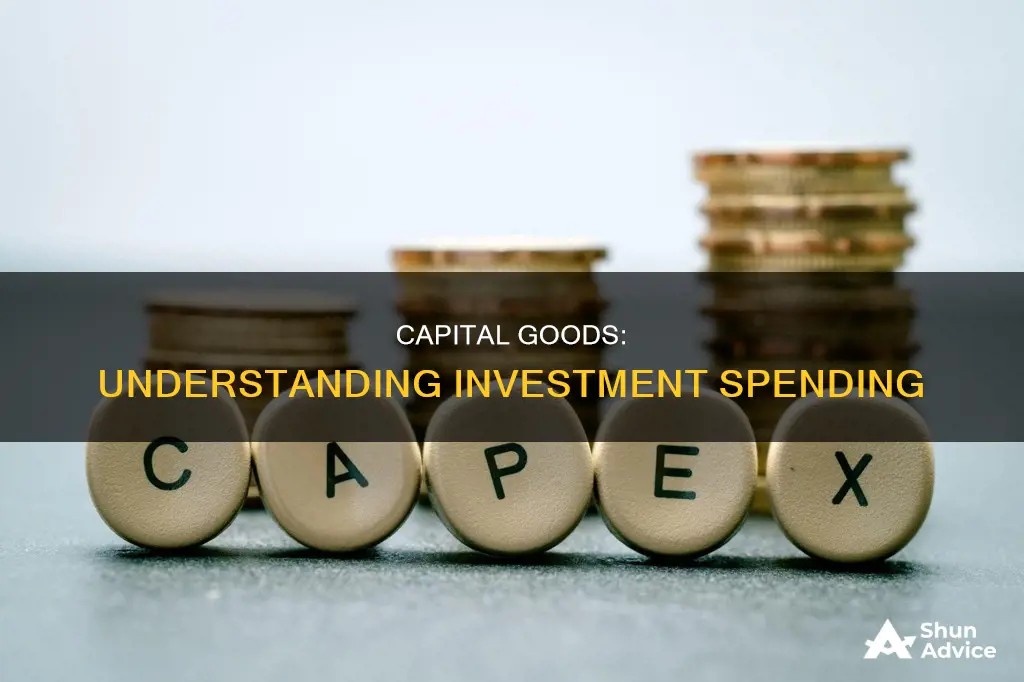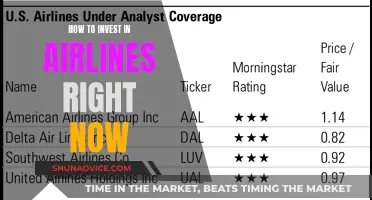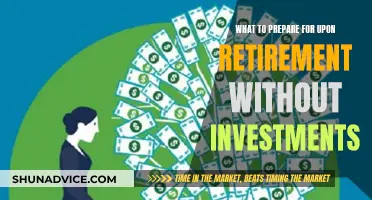
Investment spending is a crucial aspect of a country's economy, encompassing business expenditures on plant and equipment, residential construction, and changes in private inventories. It is often a significant driver of business cycles and can even lead to recessions.
Investment spending, also known as gross private domestic investment, includes private non-residential fixed investment, such as structures, equipment, and intellectual property products, as well as private residential fixed investment. The change in private inventories, which refers to the physical volume of inventories owned by private businesses, is also a key component of investment spending.
The determination of what constitutes investment spending is essential for understanding a country's economic landscape and making informed decisions about future investments and policies.
| Characteristics | Values |
|---|---|
| Definition | Business expenditures on plant and equipment, plus residential construction, plus the change in private inventories |
| Other Names | Gross private domestic investment |
| Components | Private non-residential fixed investment, private residential fixed investment, and the change in private inventories |
| Non-residential Fixed Investment | Fixed investment in items not for residential use; buildings constructed at the location where they are used and have long lives; things used in the production of other products; intellectual property products |
| Residential Fixed Investment | Primarily private residential construction |
| Change in Private Inventories | The change in the physical volume of inventories owned by private businesses, valued at average prices of the period |
| Examples of Non-residential Fixed Investment | Manufacturing plant, manufacturing equipment |
| Example of Residential Fixed Investment | House |
| Inventory Investment | Stacks of lumber in a warehouse or stockyard |
What You'll Learn

Business expenditures on plant and equipment
The cost of PP&E includes the purchase price of the asset and all expenditures necessary to prepare it for its intended use. For example, when purchasing land, the cost would include real estate commissions, legal fees, bank fees, and title search fees. If there are existing structures on the land that need to be demolished, those expenses would also be included in the cost of the land.
Buildings as PP&E include the purchase price and all closing costs associated with the acquisition, including back taxes. Remodeling or making repairs to an acquired building to make it usable are also considered part of the cost. If a building is constructed over an extended period, interest payments to finance the structure are included in the cost during construction. Once construction is complete, interest payments are classified as interest expenses.
Equipment, vehicles, and furniture costs include the purchase price, sales taxes, transportation fees, insurance during shipment, assembly, and installation. These costs do not include motor vehicle licensing and insurance, as these are considered normal, recurring operational expenses.
PP&E is recorded on a company's balance sheet and is considered a long-term investment. It is measured using historical cost, which includes the actual purchase cost and any improvements made to bring it to use. The gross value of PP&E is adjusted for use and depreciation, which accounts for declines in value. Land assets, however, are not depreciated as they have the potential to appreciate and are represented at their current market value.
Investment in PP&E is a positive sign for investors as it indicates management's faith in the long-term outlook of the company. It is also a capital-intensive endeavour, requiring significant funds. Companies may borrow against their PP&E as collateral for loans, and in times of financial difficulty, they may liquidate these assets to fund operations.
Retirement Investments: Navigating the Art of Splitting Assets
You may want to see also

Residential construction
The investment in residential construction represents the spending value of building construction by households, enterprises, and governments, excluding land value. This spending encompasses a range of costs, including materials, labor, construction equipment rental, contractor profits, architectural and engineering work, and overhead costs.
In addition to new construction, residential investment can also include residential remodeling, manufactured homes, and brokers' fees. This highlights the diverse nature of residential construction spending, which goes beyond just the initial construction of dwellings.
The impact of residential construction on the economy is significant, with housing contributing an average of 15-18% to the Gross Domestic Product (GDP). Residential investment alone accounts for roughly 3-5% of GDP, showcasing the importance of this sector in driving economic growth and development.
The Vtinx Retirement Conundrum: A Risky Gamble or a Savvy Strategy?
You may want to see also

Change in private inventories
Inventories can be in the form of finished goods, which are ready for sale, work in process, or materials and supplies that are acquired for use in the production process. CIPI is different from the change in the book value of inventories that most businesses report, which are valued using a variety of accounting methods and may include holding gains or losses resulting from price changes.
For example, a retail business opening a new store will first need to construct a building (fixed investment) and install shelves, cash registers, computer terminals, and other equipment (producers' durable equipment, another form of fixed investment). However, they will also need to stock their shelves before opening their doors to customers, which is considered an inventory investment.
Firms maintain inventories for various reasons. One reason is to ensure a continuous stream of production and sales in case of input supply shortages. Another reason is to meet any unexpected surge in demand and avoid lost sales due to stockouts when customers are ready and willing to buy.
There are two main categories of private business inventory changes: farm and nonfarm. The nonfarm component is usually larger and can be further divided into manufacturing, wholesale trade, and retail trade, with manufacturing typically being the largest subcategory.
There are two types of inventory changes: planned and unplanned. Planned inventory changes are intentional adjustments to inventory levels, while unplanned changes often result from business-cycle instability. For example, during a recession, one of the first signs of trouble is an increase in "unplanned" business inventories as demand tapers off and inventories start to accumulate. Conversely, as the economy begins to recover, the first sign is often a reduction in business inventories as demand picks up.
The Imminent Investment: When Will William Take the Plunge?
You may want to see also

Nonresidential fixed investment
In 2011, non-residential investment made up $1.48 trillion of the total gross private domestic investment in the United States. This represented 12.2% of GDP. Commercial real estate's contribution to GDP declined from $583.6 billion in 2008 to $409.5 billion in 2011, representing a decrease from 3.8% to 2.7% of GDP.
The Private Nonresidential Fixed Investment (PNFI) in the first quarter of 2024 was valued at 3,823.986 billion dollars, according to the U.S. Bureau of Economic Analysis.
Invest Wisely: Cash Strategies for Today
You may want to see also

Planned investment spending
The main factors influencing planned investment spending are interest rates, the expected future level of real gross domestic product (GDP), and current production capacity. Interest rates have a clear impact on residential construction as they affect monthly mortgage payments and, consequently, housing affordability and home sales. Interest rates also determine project profitability, as the return on investment projects must exceed the cost of borrowing to finance those projects (cost of capital). Therefore, higher interest rates lead to higher capital costs, resulting in fewer projects being undertaken and lower investment spending. On the other hand, lower interest rates reduce capital costs, making it easier for firms to obtain a return on investment that is higher than the cost of capital, leading to increased investment spending.
If companies anticipate rapid real GDP growth, they usually expect rapid sales growth as well, which will lead to increased investment spending. This is why the quarterly real GDP report is crucial for business leaders as it helps them estimate their potential sales performance and plan their budgets for investment spending accordingly.
Higher expected sales lead to higher required production capacity. If the current capacity is low, higher expected sales would result in increased investment spending to boost capacity. However, if the current capacity is already high, firms may not increase investment spending, even if sales are projected to rise. Firms will only invest in new capacity if sales are expected to catch up to or surpass the current capacity.
Florida: Invest Now or Never?
You may want to see also
Frequently asked questions
Investment spending, or gross private domestic investment, is one of the components of GDP. It is defined as business expenditures on plant and equipment plus residential construction, as well as the change in private inventories.
Spending refers to the purchase of goods or services for consumption, while investing involves purchasing goods or services to produce other products or services or to enhance a business.
Investment spending can be calculated using the following formula:
I = GDP - C - G - NX
Where:
- I = Investment Spending
- GDP = Gross Domestic Product
- C = Consumer Spending
- G = Government Spending
- NX = Net Exports (Exports - Imports)







